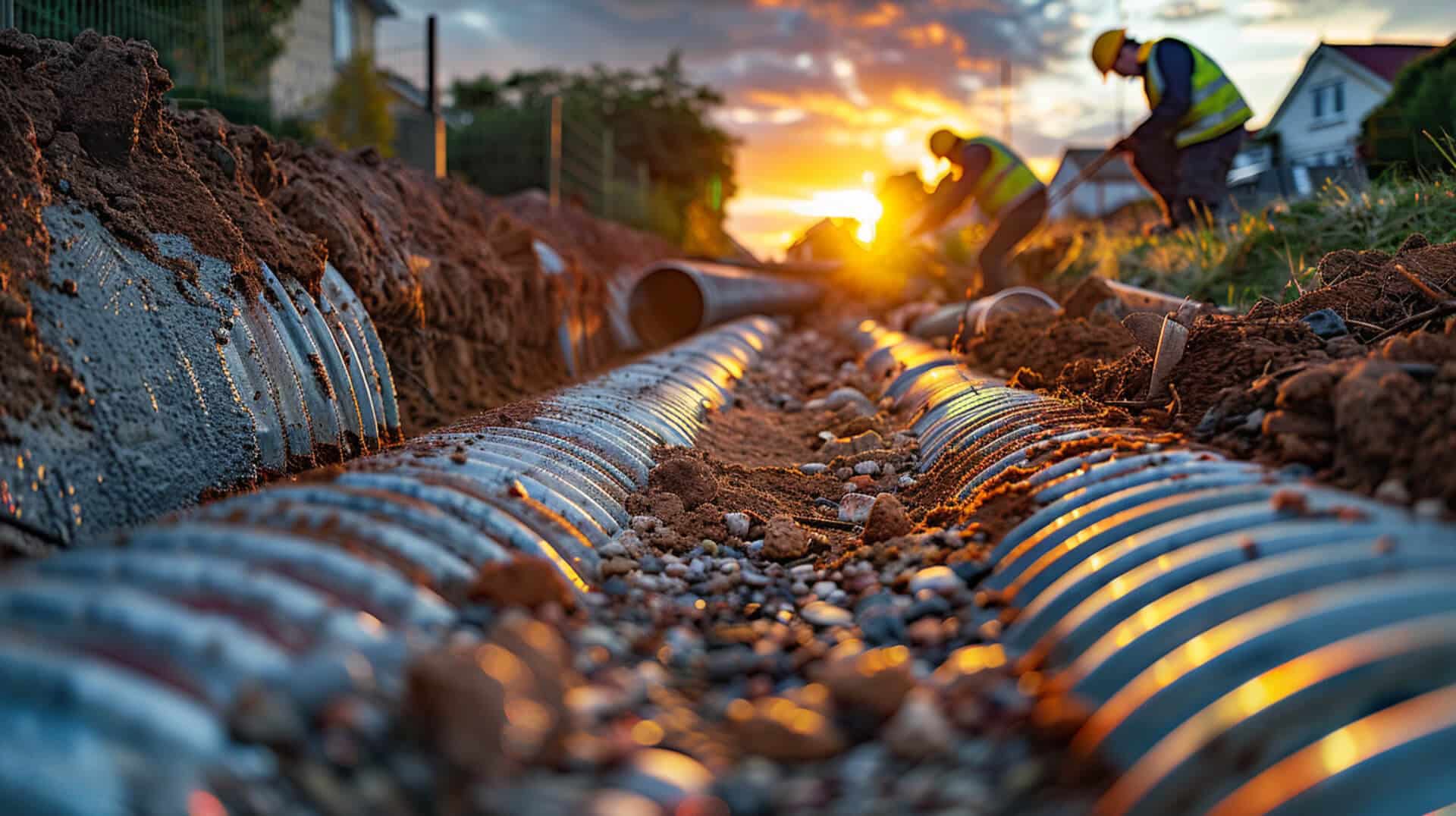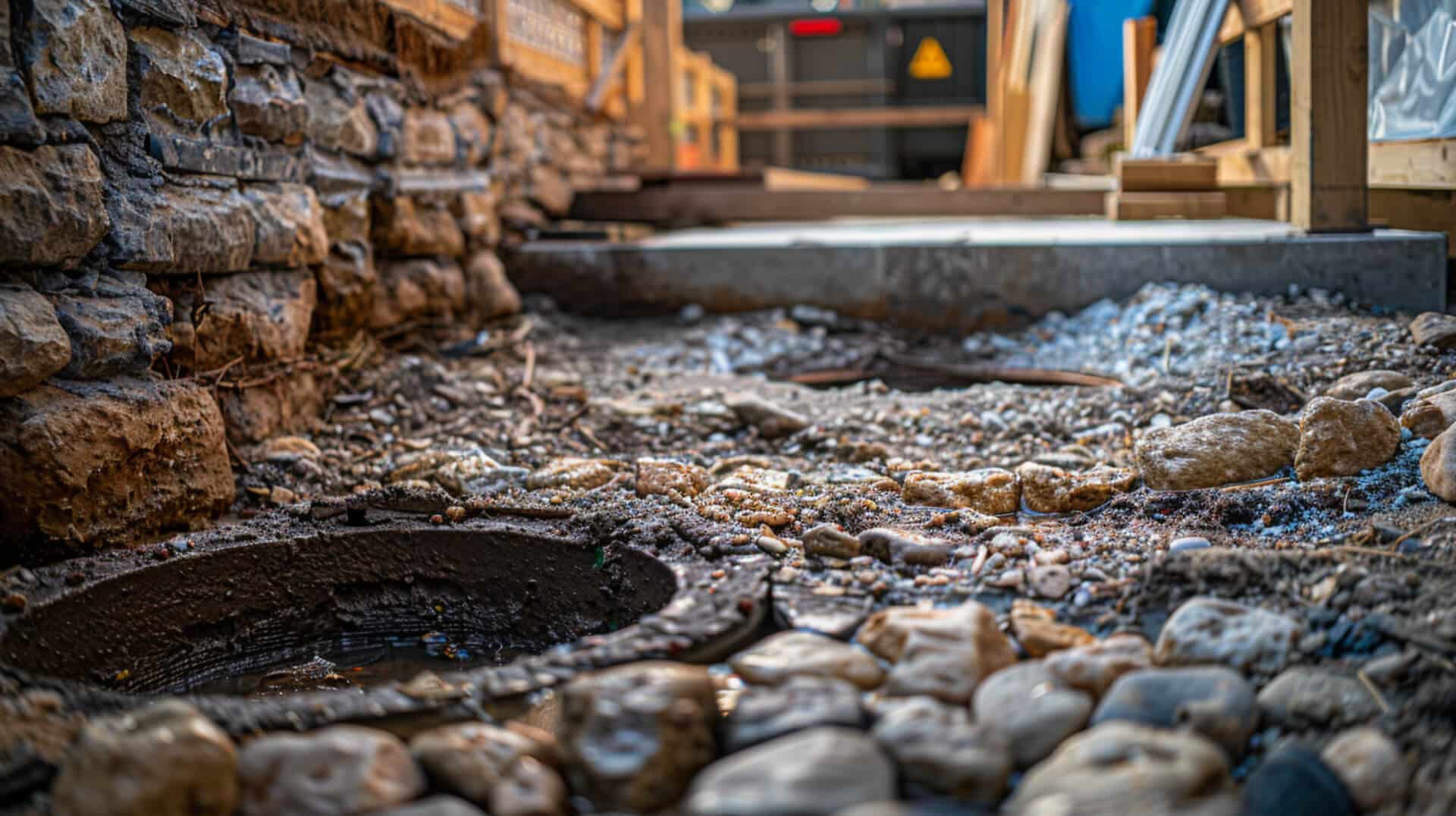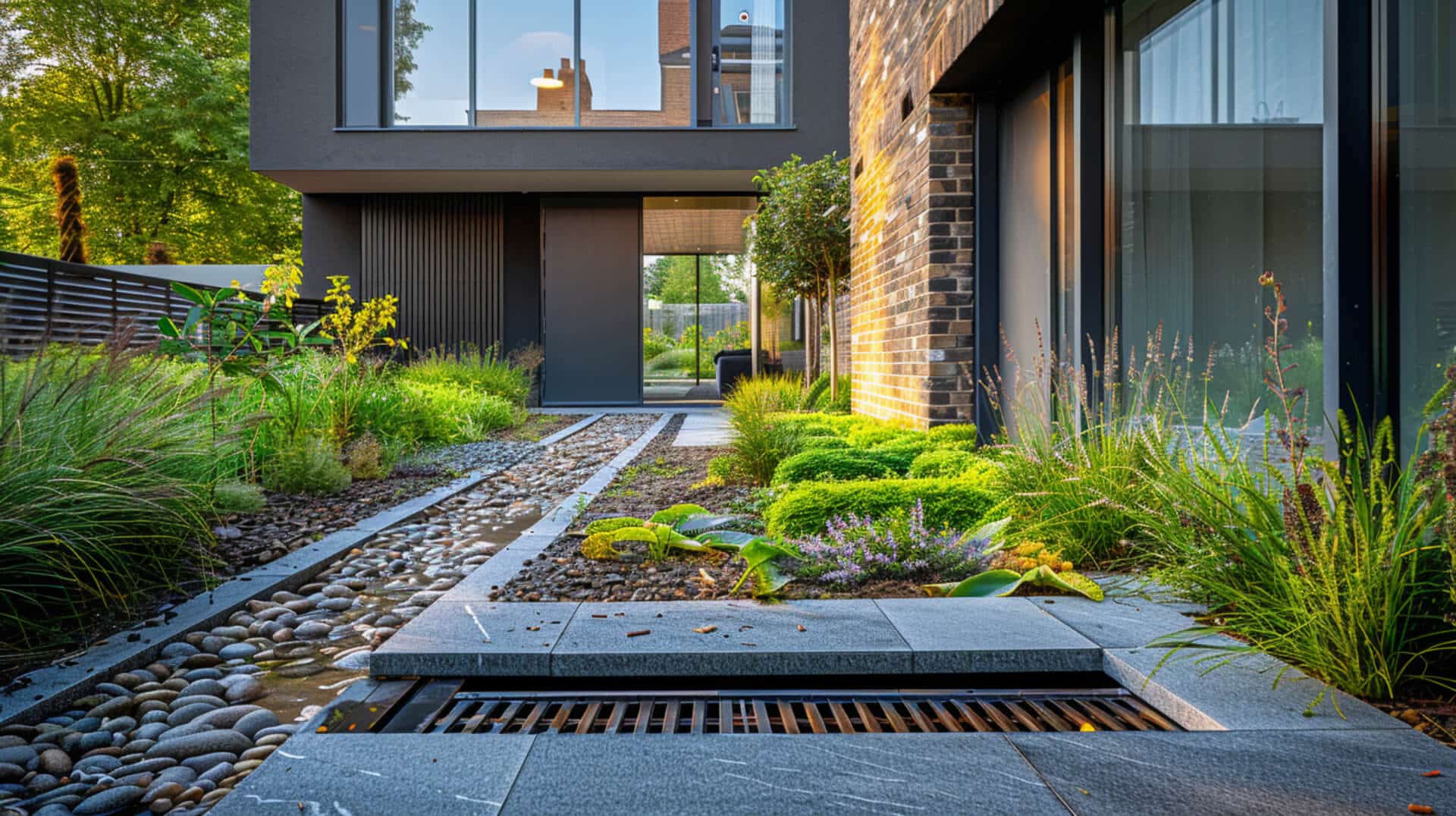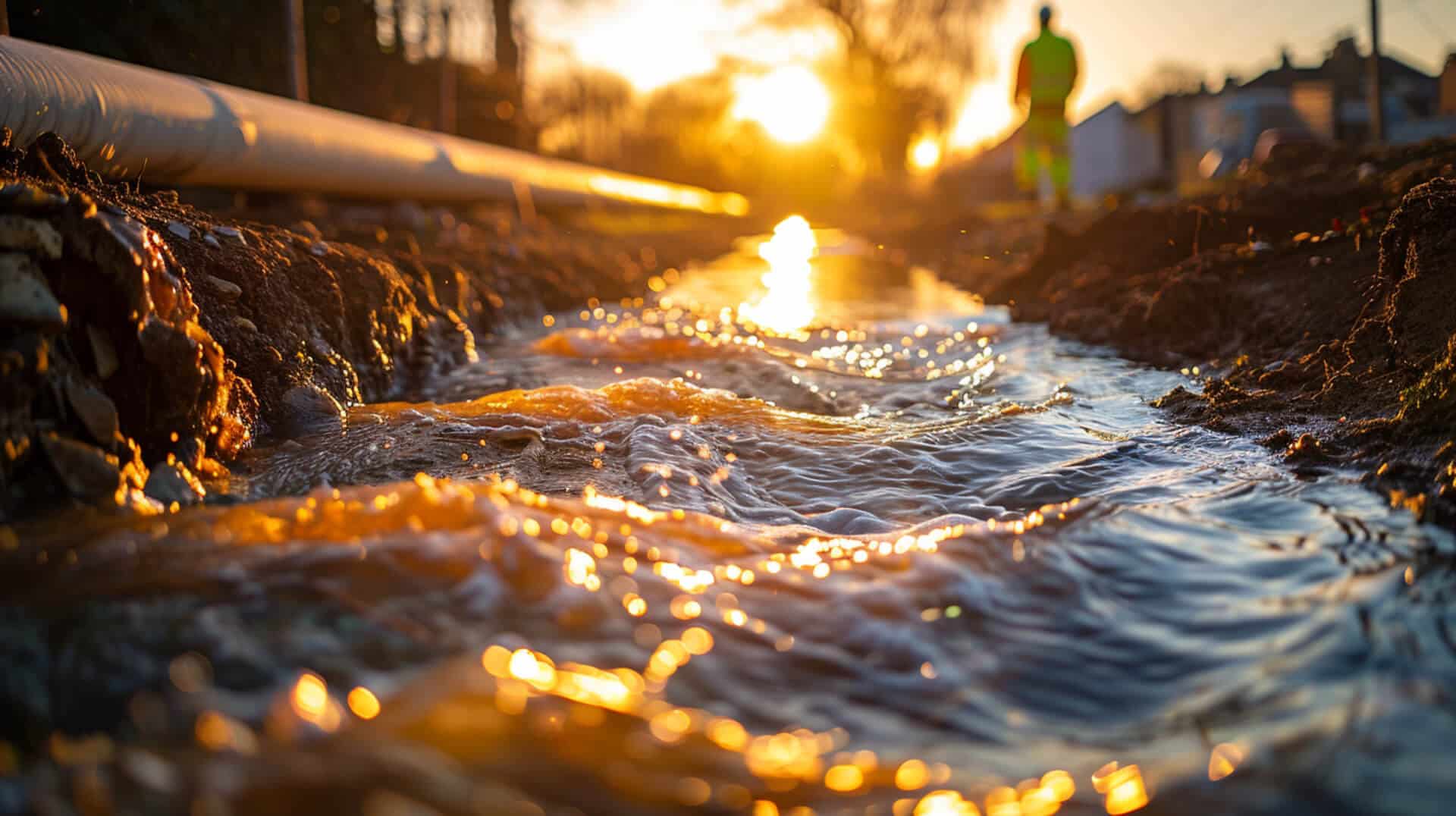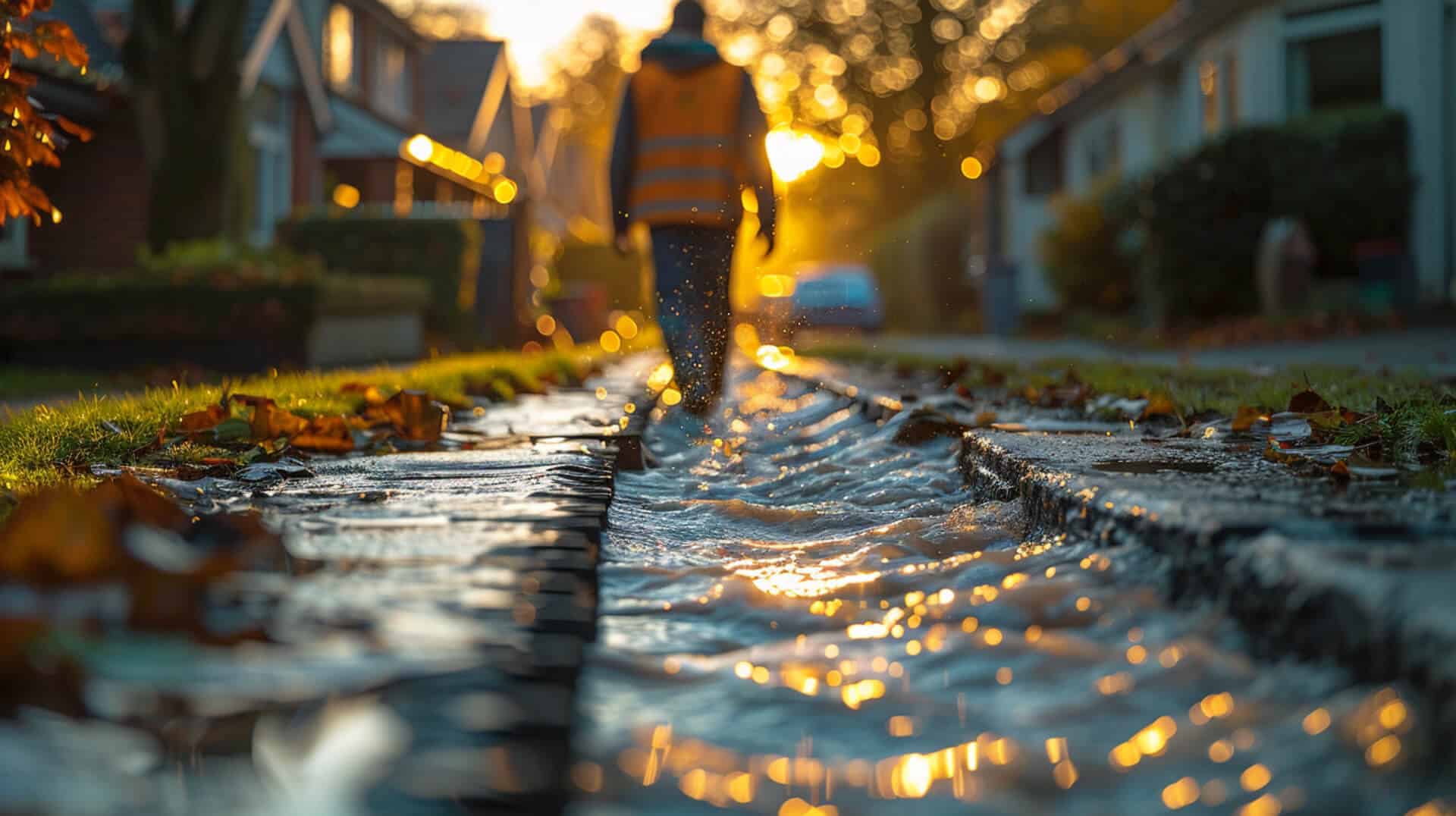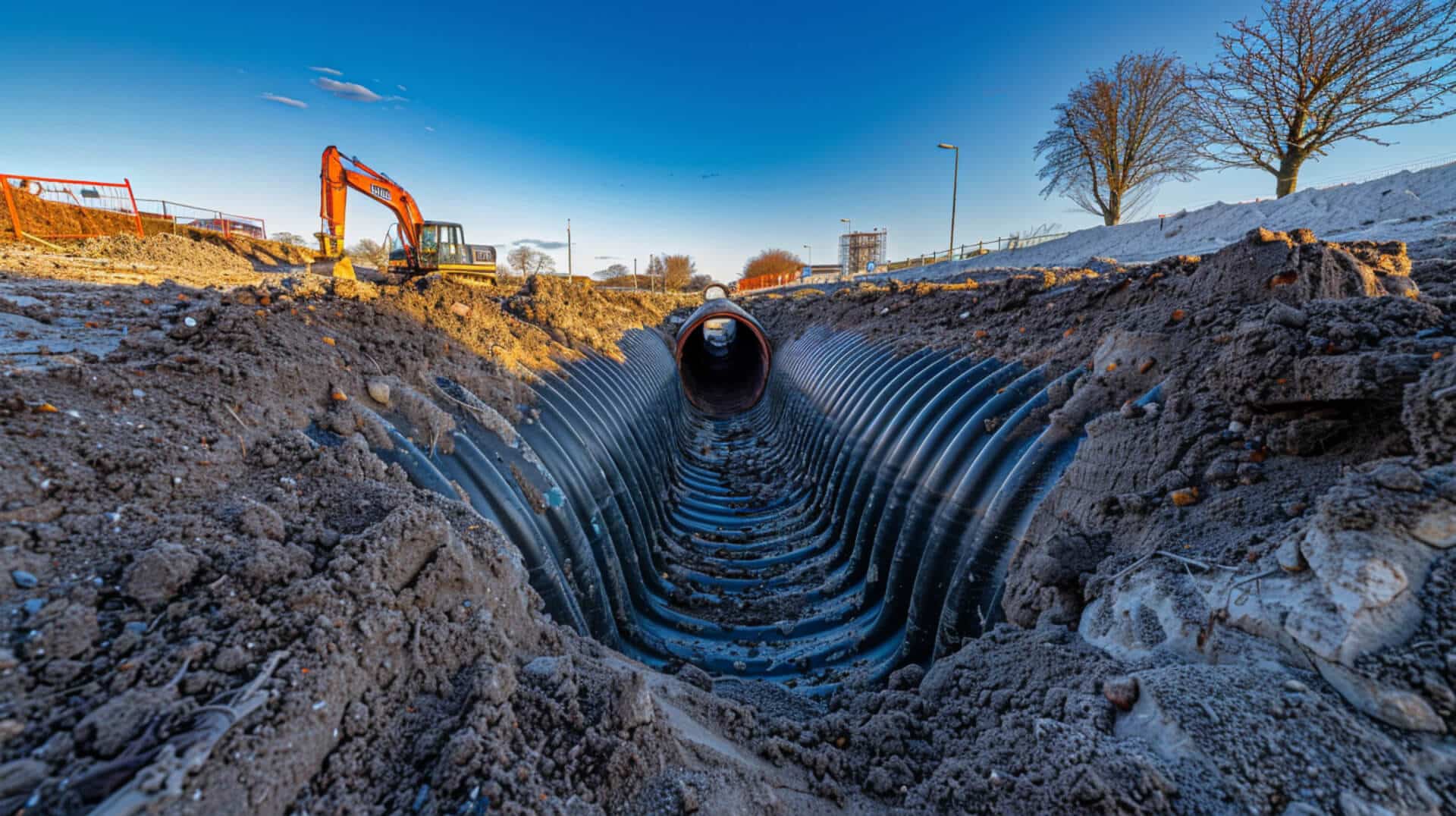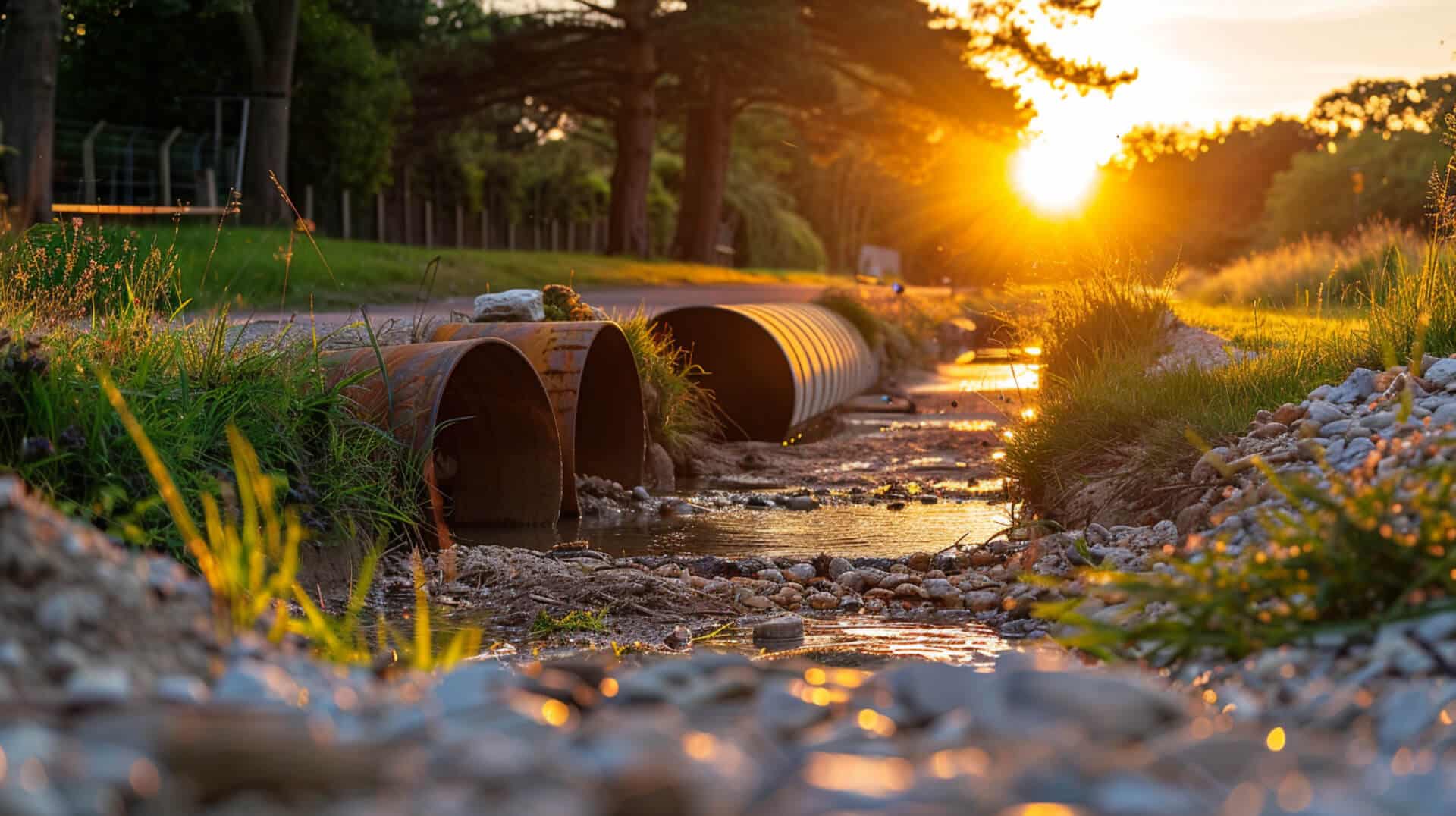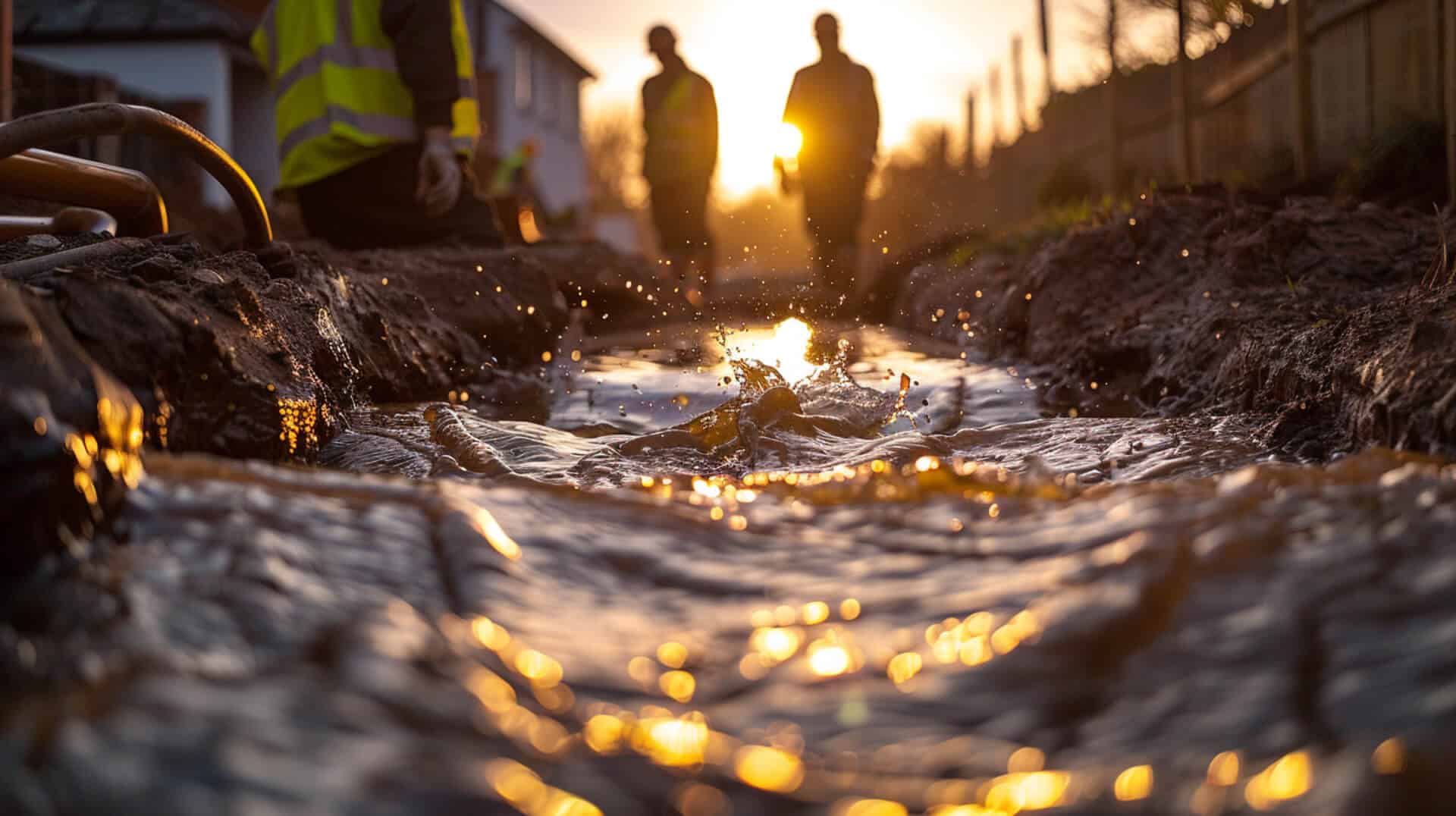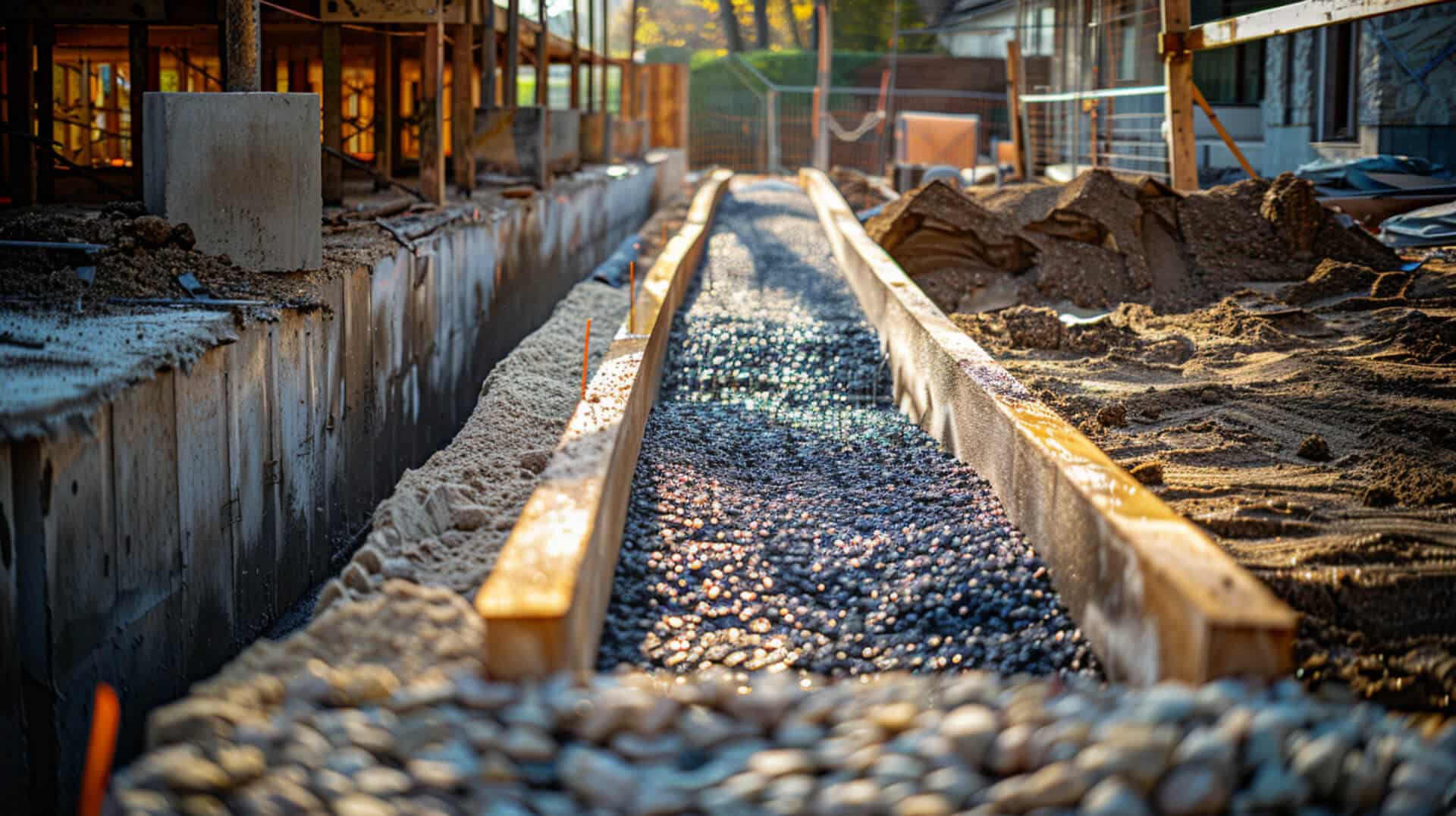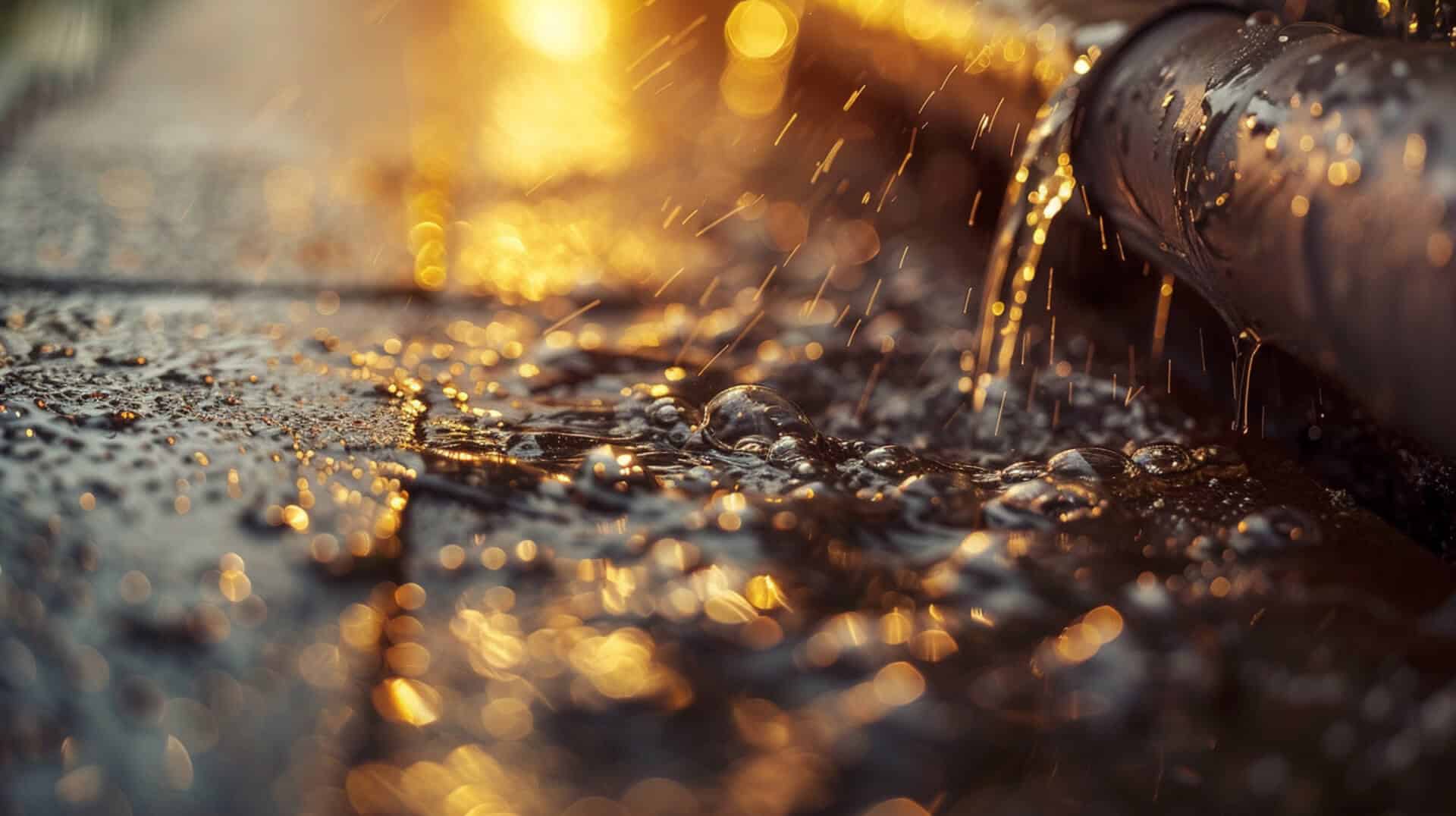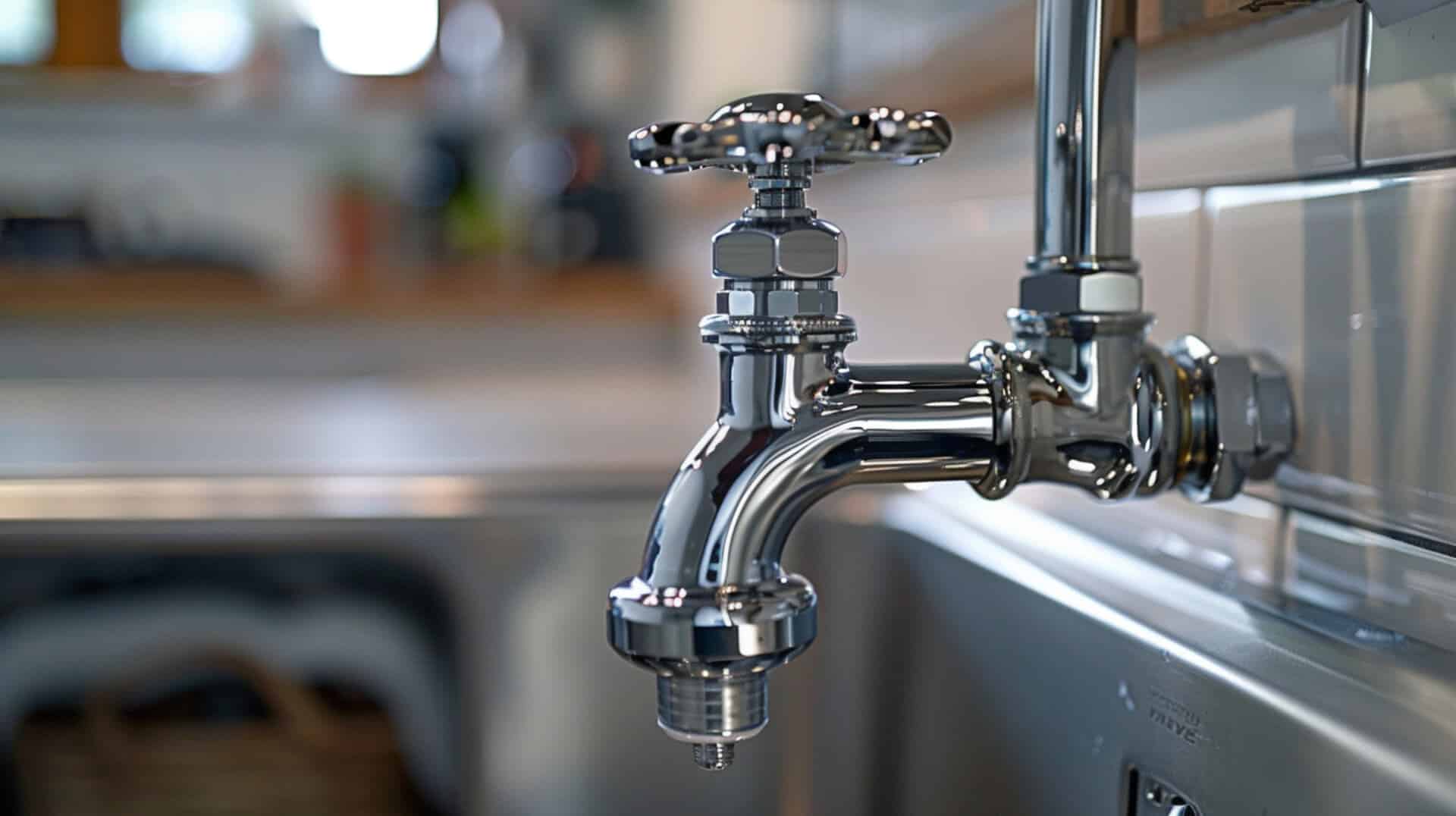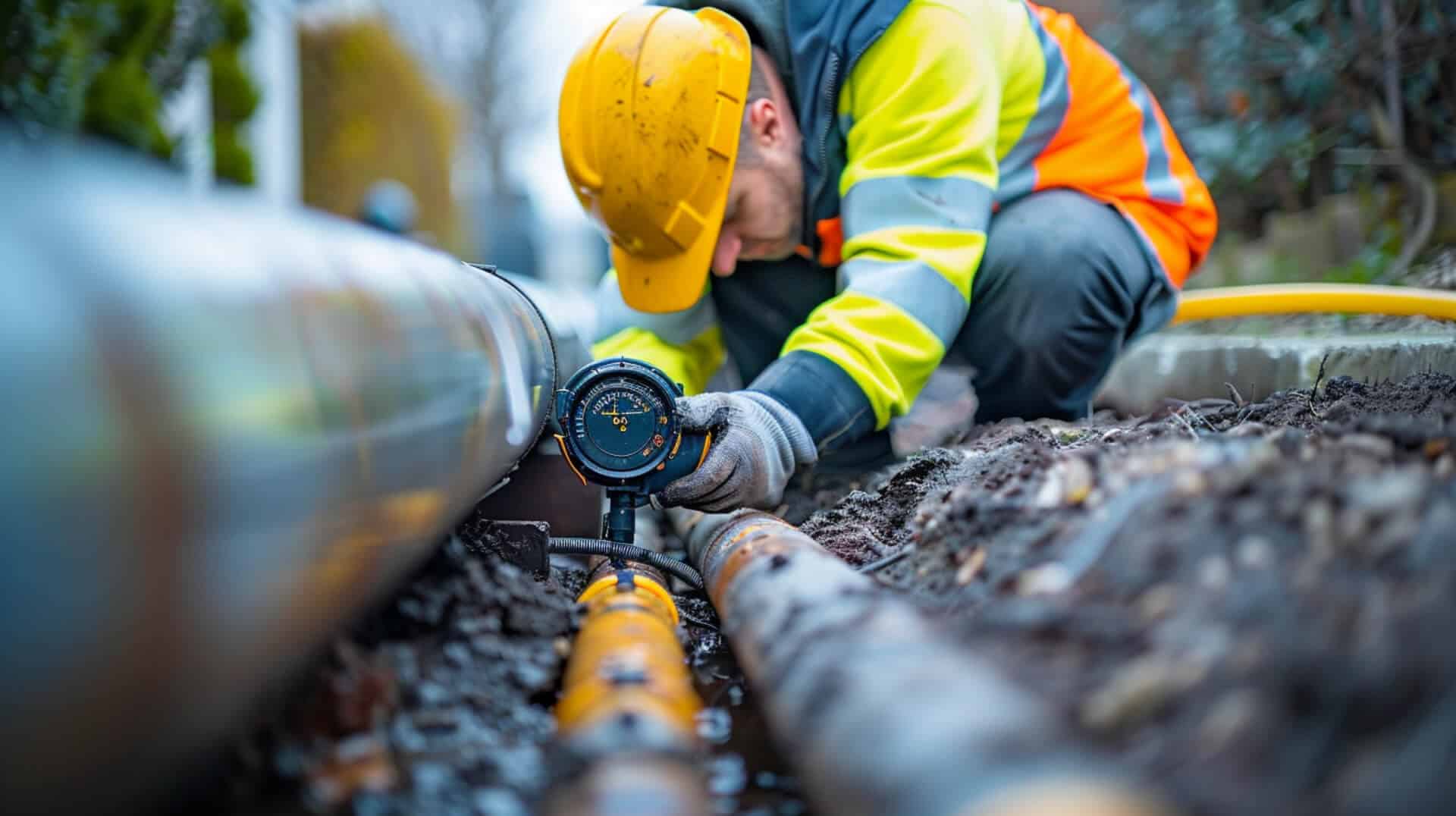 What Materials Are Needed For Drainage Ditch And Culvert Installation
What Materials Are Needed For Drainage Ditch And Culvert Installation
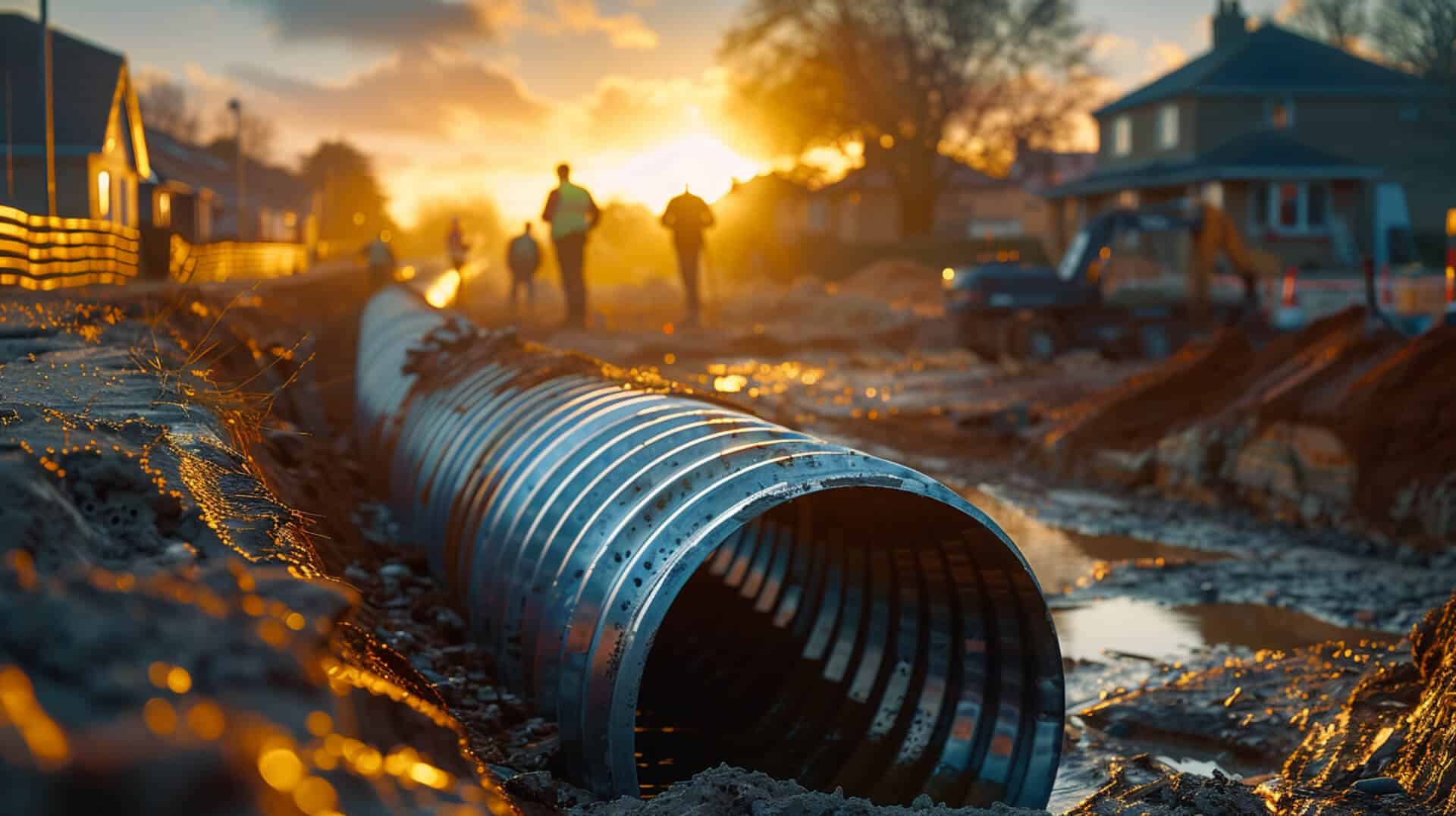
Drainage ditches and culverts serve a critical role in managing water flow across landscapes. They prevent water accumulation that can lead to flooding and erosion, thereby protecting property and infrastructure. The selection of materials for these installations is pivotal, as it directly influences the durability, efficiency, and environmental impact of the water management system.
Purpose of Drainage Systems
Drainage ditches and culverts are designed to channel water away from areas where it can cause damage. They are essential components in road construction, agricultural fields, and residential areas to control water movement and distribution.
Importance of Material Selection
The materials used in constructing drainage systems must withstand environmental stressors such as water flow, pressure, and weather conditions. The choice of material affects not only the installation process but also the long-term functionality and maintenance requirements of the drainage system.
Considerations for Installation
Property owners should consider installing or upgrading culverts and drainage ditches when existing systems are inadequate or when changes in land use or climate patterns increase water management needs. It is crucial to assess the site-specific conditions, such as soil type and water flow patterns, to determine the most suitable materials and installation methods.
Environmental and Regulatory Impact
Material selection for drainage systems is also governed by environmental considerations and regulatory standards. It is essential to choose materials that minimise ecological disruption and comply with local building codes and environmental regulations. This ensures the longevity of the installation and safeguards against legal and environmental repercussions.
Understanding the Types of Culverts
Culverts are integral components of drainage systems, serving as channels for water to flow beneath roadways, railways, or embankments. The selection of culvert material is pivotal, as it directly influences the structure’s durability, performance, and suitability to environmental conditions.
Concrete, HDPE, and Steel Culverts
Concrete Culverts are known for their strength and longevity. They are commonly used in scenarios where heavy loads are expected, such as under highways or in industrial areas. Concrete’s robustness makes it an excellent choice for long-term installations, though its weight necessitates heavy machinery during installation.
High-Density Polyethylene (HDPE) Culverts offer a lightweight alternative, significantly easing transportation and installation. HDPE is resistant to corrosion and has a smooth interior surface, reducing the risk of blockages and facilitating efficient water flow. These culverts are particularly beneficial in areas with acidic soils or where corrosion is a concern.
Steel Culverts are valued for their strength and flexibility. They can withstand substantial environmental stress, making them suitable for areas with variable water flow or freeze-thaw cycles. However, steel requires protective coatings to prevent corrosion over time.
Expert Advice on Culvert Selection
When determining the most effective culvert type for a specific scenario, consulting with experts is advisable. Engineers and installation professionals can provide insights into the best materials based on the site’s water flow characteristics, load requirements, and environmental factors. Suppliers such as Prinsco Inc and Cotterill Civils offer not only a range of culvert options but also the expertise to guide your selection process, ensuring that your installation meets both performance needs and regulatory standards.
Selecting Materials for Drainage Ditches
When constructing drainage ditches, the choice of materials is critical for ensuring efficient water management and long-term durability. The materials used must facilitate proper water flow and withstand environmental stresses.
Gravel and Aggregates in Drainage Construction
Gravel and aggregates are commonly utilised in drainage ditches for their ability to support water filtration and prevent soil erosion. These materials allow water to percolate through while providing structural stability to the ditch. The size and type of gravel or aggregate used can be tailored to the specific needs of the project, with larger stones typically employed for higher water flow areas and finer aggregates used where filtration is a priority.
Impact on Water Flow and Filtration
The material composition within drainage ditches directly affects both water flow and filtration. Coarse materials, such as gravel, enhance water flow, reducing the risk of blockages and standing water which can attract pests or become a breeding ground for bacteria. Simultaneously, these materials act as a philtre, trapping sediments and preventing contaminants from entering the watercourse.
Sourcing Quality Materials
For property owners seeking to source materials for drainage ditches, it is important to select high-quality products that comply with local environmental regulations. Suppliers like Prinsco Inc and Cotterill Civils offer a range of materials suitable for various drainage projects. They can also provide guidance on the best materials for your specific installation, ensuring both efficiency and compliance with environmental standards.
Foundation and Backfilling Essentials for Culvert Installation
A stable foundation and proper backfilling are crucial for the longevity and functionality of culvert installations. The materials used in these processes play a significant role in the overall success of the project.
Selecting Foundation Materials
For the foundation of a culvert, materials such as compacted soil, gravel, or lean concrete are typically used to provide a stable base. The choice of material depends on the soil conditions and the expected load on the culvert. Compacted soil can be sufficient for light loads, while gravel or lean concrete might be necessary for heavier loads or less stable soil conditions.
Impact of Backfill Materials on Durability
The backfill materials, which are used to fill in the space around the culvert, are essential for supporting the structure and preventing soil erosion. Options include native soil, gravel, or sand. Each material has different drainage properties and compaction requirements. For instance, gravel allows for better drainage but may require more careful compaction to avoid voids that could lead to structural weaknesses.
Compliance with Environmental Regulations
Environmental regulations may dictate the use of specific backfill techniques or materials to minimise impact on the surrounding ecosystem. For example, using non-toxic materials to protect groundwater quality or selecting aggregates that are less likely to cause downstream sedimentation.
Expert Guidance on Best Practices
Professionals such as civil engineers or installation specialists from companies like Prinsco Inc and Cotterill Civils can provide valuable guidance on the best practices for foundation preparation and backfilling. They can help you select the appropriate materials and techniques to ensure compliance with environmental regulations and the long-term stability of your culvert installation.
Environmental Considerations in Material Selection for Drainage and Culverts
Selecting materials for drainage ditches and culverts requires careful consideration of environmental factors. The materials chosen should minimise erosion, protect water quality, and comply with local regulations.
Minimising Erosion and Protecting Water Quality
Erosion control is vital to maintaining the integrity of watercourses and surrounding landscapes. Materials such as non-woven geotextiles can be used alongside gravel to prevent soil displacement. Additionally, the use of riprap or gabions may be appropriate in areas with high water velocity to protect against erosion.
Protecting water quality is another critical consideration. Materials should be non-toxic and free from contaminants to prevent leaching into the water supply. For instance, using recycled concrete must be assessed for potential environmental hazards before being deemed suitable for use in drainage projects.
Compliance with Local Regulations
Local regulations often dictate the types of materials that can be used in drainage and culvert installations. These regulations are designed to ensure that projects do not adversely affect the environment. For example, certain areas may require the use of permeable materials to support groundwater recharge.
Guidance on Environmentally Compliant Materials
Property owners can find guidance on environmentally compliant materials from local environmental agencies or consulting with civil engineering firms. Suppliers like Prinsco Inc and Cotterill Civils also offer expertise in selecting materials that meet both the project requirements and environmental standards. It is recommended to engage with these resources early in the planning process to ensure that all environmental considerations are adequately addressed.
Safety Measures in Material Handling and Installation
Safety is paramount when handling materials for drainage ditch and culvert installation. Proper precautions ensure the well-being of the installation team and the structural integrity of the project.
Ensuring Safe Material Handling
During material handling, it is essential to use appropriate lifting techniques and machinery. Heavy materials like concrete culverts require equipment such as cranes or backhoes. Personnel should be trained in operating such machinery and in manual handling to prevent injuries.
Importance of Stable Excavation
Stable excavation is crucial to prevent collapses that could endanger workers and compromise the culvert’s structure. Sloping, shoring, and benching are techniques used to stabilise trench walls. The selection of these techniques depends on factors like soil type and depth of the trench.
Achieving Secure Pipe Joints
Secure pipe joints are achieved through proper alignment and the use of correct jointing materials. For instance, rubber gaskets are used for concrete pipes, while HDPE pipes may require heat fusion. Ensuring tight and secure joints prevents leakage and structural failure.
Safety Training Providers
Safety training for teams working on culvert and drainage installations is available from various sources, including occupational safety organisations and suppliers like Prinsco Inc and Cotterill Civils. These entities can provide specialised training tailored to the specific materials and equipment used in your project.
Navigating Local Regulations and Compliance
Adhering to local guidelines is essential when selecting materials and proceeding with the installation of drainage ditches and culverts. Compliance ensures the safety and sustainability of the project while aligning with legal requirements.
Understanding Building Regulations Part H
Building Regulations Part H are critical as they set standards for drainage and waste disposal. These regulations encompass requirements for system design, including the materials used, to prevent structural failures and environmental contamination. Compliance with Part H is not only a legal obligation but also a measure to safeguard the community and the environment.
Ensuring Environmental Regulation Compliance
Property owners must ensure their projects align with environmental regulations, which may include restrictions on materials to protect local ecosystems. Engaging with environmental consultants or local authorities can provide clarity on these regulations. Documentation such as Environmental Impact Assessments (EIA) may be required to demonstrate compliance.
Accessing Regulatory Requirements
The latest regulatory requirements for drainage installations can be found through local government websites or by consulting with professional bodies related to civil engineering and environmental management. Suppliers like Prinsco Inc and Cotterill Civils often stay abreast of these regulations and can offer current advice on compliance. It is advisable to review these resources regularly to stay informed of any changes that could affect your project.
The Role of HDPE in Culvert Installations
High-Density Polyethylene (HDPE) culverts have become a popular choice in modern drainage systems due to their distinct advantages over traditional materials.
Advantages of HDPE
HDPE culverts are known for their lightweight nature, which significantly simplifies handling and installation processes. Unlike heavier materials that require machinery for placement, HDPE can often be manoeuvred manually or with minimal equipment. Additionally, HDPE is resistant to corrosion and chemical degradation, making it a durable option for environments with variable pH levels or salinity.
Environmental Benefits of HDPE
HDPE is considered environmentally friendly due to its recyclability. At the end of its service life, HDPE can be repurposed, reducing the environmental impact. Its corrosion resistance also means fewer materials leach into the surrounding soil and water, preserving the quality of the ecosystem.
Installation Process of HDPE Culverts
The installation of HDPE culverts differs from traditional materials in that it often requires fewer steps and less equipment. The joints of HDPE pipes can be fused together, creating a seamless and leak-proof connection that enhances the integrity of the drainage system.
Suppliers and Installation Guidance
For those seeking HDPE culverts, suppliers such as Prinsco Inc and Cotterill Civils offer a range of options along with expert guidance on installation. These suppliers can assist in determining the appropriate size and length of HDPE culverts for specific projects and provide advice on best installation practices to ensure optimal performance.
Ordering Process and Supplier Selection for Culvert and Drainage Materials
When preparing to order materials for culvert and drainage installations, several factors must be considered to ensure the success of your project.
Factors to Consider in Material Ordering
- Material Quality: Ensure the materials meet industry standards for durability and compliance with environmental regulations.
- Project Specifications: Match the materials to the specific requirements of your project, including size, strength, and compatibility with local conditions.
- Cost Efficiency: Compare prices from various suppliers to find the best value without compromising on quality.
The Importance of Supplier Diversity
Diverse suppliers can offer a wider range of materials and pricing options, allowing you to find the best match for your project’s needs. They may also provide different levels of customer service, technical support, and delivery options.
Ensuring Quality and Competitive Pricing
To ensure you are getting quality materials at competitive prices, request quotes from multiple suppliers. Examine the suppliers’ track records, warranties, and service agreements. It’s also beneficial to establish a relationship with suppliers like Prinsco Inc and Cotterill Civils, known for their focus on customer satisfaction and extensive product ranges.
Finding Supplier Reviews and Testimonials
Reviews and testimonials can be found on supplier websites, industry forums, and independent review platforms. These can provide insights into the experiences of other customers with the supplier’s materials and services, aiding in your decision-making process.
Addressing Challenges in Drainage Ditch and Culvert Installation
Common Installation Challenges
During the installation of drainage ditches and culverts, you may encounter a variety of challenges. These can include unexpected soil conditions, water management issues during construction, and difficulties in aligning and securing the culvert sections. Such challenges can delay the project and increase costs if not managed effectively.
The Role of Planning and Material Selection
Proper planning and material selection are vital to overcoming installation challenges. Detailed site assessments can reveal potential issues with soil stability or water flow that may affect material choices. Selecting the right materials, such as the type of culvert and backfill, can prevent future problems like structural failure or water blockages.
Mitigating DIY Installation Risks
For property owners considering a DIY approach to installation, it is crucial to understand the risks involved. Inadequate planning or improper installation can lead to significant issues. To mitigate these risks, thoroughly research the installation process and consult with experts if uncertain about any aspect of the project.
Consulting with Experts
When facing challenges, consulting with industry professionals can provide valuable troubleshooting advice and solutions. Suppliers like Prinsco Inc and Cotterill Civils not only offer materials but also have expertise in installation best practices. Their guidance can be instrumental in ensuring a successful and compliant drainage system installation.
Practical Examples and Case Studies of Drainage and Culvert Installations
Real-World Success Stories
In the realm of drainage and culvert installations, real-world examples serve as valuable resources for understanding the impact of material choices and installation techniques. Case studies from various regions demonstrate how specific materials have been selected to address unique environmental conditions and project requirements.
Positive Outcomes from Material Selection
For instance, the use of HDPE culverts in areas prone to acidic soil has led to long-term durability and reduced maintenance costs. Similarly, the strategic placement of concrete culverts in high-traffic areas has provided robust solutions capable of withstanding heavy loads.
Overcoming Installation Challenges
Challenges such as unexpected soil conditions or high water tables have been navigated through meticulous planning and the use of adaptive materials like flexible HDPE, which can accommodate shifting soils without compromising the integrity of the water management system.
Accessing Detailed Case Studies
Property owners, business owners, and facility managers can find detailed case studies and project analyses through industry publications, supplier websites like those of Prinsco Inc and Cotterill Civils, and professional engineering associations. These resources offer insights into the decision-making processes and outcomes of various projects, providing a practical perspective on the complexities of drainage and culvert installations.
Key Takeaways for Material Selection in Drainage and Culvert Installations
Selecting the right materials for drainage ditches and culverts is a critical decision that affects the efficiency and longevity of water management systems. The materials must be chosen with consideration for the specific environmental conditions and regulatory requirements of the installation site.
Ensuring Longevity and Efficiency
To ensure the longevity and efficiency of drainage and culvert installations, property owners, business owners, and facility managers should prioritise materials that offer durability against environmental stressors such as water flow, soil composition, and traffic load. Regular maintenance and inspections can also extend the service life of these installations.
Accessing Support and Resources
For ongoing support and resources, individuals responsible for these installations can turn to suppliers like Prinsco Inc and Cotterill Civils, which offer not only materials but also expertise in selection and installation. Additionally, professional associations and online forums provide platforms for sharing experiences and advice, which can be invaluable for future projects and maintenance strategies.
By approaching material selection with an informed and strategic mindset, those overseeing drainage and culvert projects can achieve installations that are both effective and compliant with current standards, ensuring the safety and sustainability of their water management systems.
